Treatment options for alopecia: an update, looking to the future
May 2012
in “Expert Opinion on Pharmacotherapy”
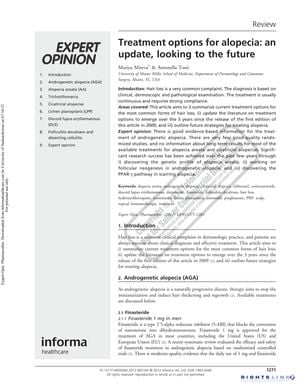
TLDR The document concludes that there are various treatments for different types of alopecia, but more research is needed for evidence-based treatments.
In 2012, the document provided an update on treatment options for alopecia, with a focus on androgenetic alopecia (AGA), alopecia areata (AA), and scarring alopecias. For AGA, approved treatments included topical minoxidil and oral finasteride, with dutasteride being an alternative in Korea. Finasteride was linked to sexual dysfunction and potential risks of high-grade prostate cancer and male breast cancer. Higher doses of finasteride combined with oral contraceptives showed some success in women. Other treatments mentioned were the HairMax® LaserComb, prostaglandin inhibitors, and platelet-rich plasma (PRP) therapy. AA treatments were mostly off-label, with topical steroids, steroid injections, topical immunotherapy, and anthralin being used. Methotrexate and oral ciclosporin showed varying success rates, and systemic steroids were effective in 59.4% of recent-onset AA patients. For trichotillomania, N-acetylcysteine improved symptoms in a 12-week study. Cicatricial alopecias were treated with anti-inflammatory approaches, and DLE was managed with photoprotection, steroids, and antimalarials. The document also discussed the potential of genomic studies for new treatments, the exploration of drugs for other autoimmune diseases, and the development of biological drugs and cell-based therapies. It emphasized the need for continued research and evidence-based treatments for alopecia.
View this study on tandfonline.com →
Cited in this study

research A randomized double-blind placebo-controlled pilot study to assess the efficacy of a 24-week topical treatment by latanoprost 0.1% on hair growth and pigmentation in healthy volunteers with androgenetic alopecia
Latanoprost 0.1% may effectively treat hair loss.
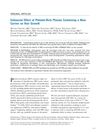
research Enhanced Effect of Platelet-Rich Plasma Containing a New Carrier on Hair Growth
Platelet-rich plasma with a new carrier significantly increases hair thickness without serious side effects.

research A randomized, single-blind trial of 5% minoxidil foam once daily versus 2% minoxidil solution twice daily in the treatment of androgenetic alopecia in women
5% minoxidil foam once daily works as well as 2% minoxidil solution twice daily for female hair growth and is more convenient.

research Evidence-based (S3) guideline for the treatment of androgenetic alopecia in women and in men
Use minoxidil for hair loss; finasteride and dutasteride for men, dutasteride for women.
research Alopecia areata: a new treatment plan
The document suggests a personalized treatment plan for alopecia areata based on the patient's age and hair loss severity, using a range of therapies ranked by effectiveness and safety.
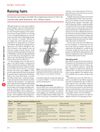
research Raising hairs
Stem cell treatments can potentially treat baldness, with one trial showing hair growth after injecting a hair-stimulating complex, and no safety issues were reported.
research Prognostic factors in methylprednisolone pulse therapy for alopecia areata
research Systemic treatment for alopecia areata
research Treatment of alopecia areata: “What is new on the horizon?”
New treatments for alopecia areata may target specific immune cells and pathways involved in hair loss.
research The genetics of alopecia areata: What's new and how will it help our patients?
New genetic discoveries in alopecia areata could lead to better treatments.
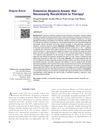
research Extensive alopecia areata: Not necessarily recalcitrant to therapy!
Some people with severe, long-lasting baldness responded well to a specific combination treatment.
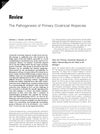
research The Pathogenesis of Primary Cicatricial Alopecias
The document concludes that more research is needed to better understand and treat primary cicatricial alopecias, and suggests a possible reclassification based on molecular pathways.

research Efficacy and Safety of Finasteride Therapy for Androgenetic Alopecia
Finasteride helps hair growth but may cause sexual side effects.

research Efficacy, safety, and tolerability of dutasteride 0.5 mg once daily in male patients with male pattern hair loss: A randomized, double-blind, placebo-controlled, phase III study
Dutasteride 0.5 mg daily improves hair growth safely in men with hair loss.

research Finasteride Treatment of Hair Loss in Women
Finasteride may help some women with hair loss, but better options exist.
research Characterization of anin vivomodel for the study of eyelash biology and trichomegaly: mouse eyelash morphology, development, growth cycle, and anagen prolongation by bimatoprost
The study showed that mouse eyelashes can be used to study eyelash growth and that bimatoprost makes them longer and more numerous.
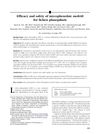
research Efficacy and safety of mycophenolate mofetil for lichen planopilaris
Mycophenolate mofetil was effective for most patients in treating scarring hair loss, but some had side effects.
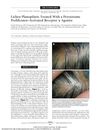
research Lichen Planopilaris Treated With a Peroxisome Proliferator–Activated Receptor γ Agonist
A specific drug can help treat Lichen Planopilaris, a condition causing permanent hair loss.
research 308‐nm Excimer Laser for the Treatment of Alopecia Areata in Children
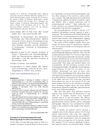
research Treatment of postmenopausal frontal fibrosing alopecia with oral dutasteride
Oral dutasteride can potentially treat frontal fibrosing alopecia in postmenopausal women, with some patients showing disease arrest and hair regrowth.
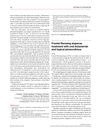
research Frontal fibrosing alopecia: treatment with oral dutasteride and topical pimecrolimus
Oral dutasteride and topical pimecrolimus can safely and effectively treat Frontal Fibrosing Alopecia, leading to significant hair regrowth.
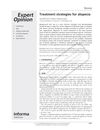
research Treatment strategies for alopecia
Some treatments work for common baldness, but there's less evidence for other hair loss types, and more research is needed.
research Combination therapy with oral PUVA and corticosteroid for recalcitrant alopecia areata
research Comparing the therapeutic effects of finasteride gel and tablet in treatment of the androgenetic alopecia

research HairMax LaserComb® Laser Phototherapy Device in the Treatment of Male Androgenetic Alopecia
HairMax LaserComb® effectively promotes hair growth and stops hair loss in males with androgenetic alopecia, with no serious side effects.
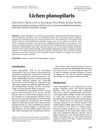
research Lichen planopilaris
Lichen planopilaris is a chronic, scarring hair loss condition with no definitive cure, requiring accurate diagnosis and treatment to manage symptoms.
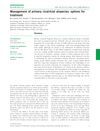
research Management of primary cicatricial alopecias: options for treatment
There are many treatments for permanent hair loss disorders, but their effectiveness varies and there's no clear best option.

research A multicenter, randomized, placebo-controlled, double-blind clinical trial of a novel formulation of 5% minoxidil topical foam versus placebo in the treatment of androgenetic alopecia in men
New 5% minoxidil foam effectively promotes hair growth and is safe for use.

research Comparison of the efficacy and safety of topical minoxidil and topical alfatradiol in the treatment of androgenetic alopecia in women
Minoxidil works better for female hair loss than alfatradiol, both safe.

research Dutasteride improves male pattern hair loss in a randomized study in identical twins
Dutasteride helps slow hair loss and boosts hair growth.
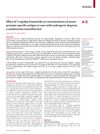
research Effect of 1 mg/day finasteride on concentrations of serum prostate-specific antigen in men with androgenic alopecia: a randomised controlled trial
Taking 1 mg/day finasteride for hair loss significantly lowers PSA levels in men, which may affect prostate cancer screening.

research The importance of dual 5α-reductase inhibition in the treatment of male pattern hair loss: Results of a randomized placebo-controlled study of dutasteride versus finasteride
Dutasteride more effective for hair growth, but has more side effects than finasteride.

research Finasteride Treatment of Female Pattern Hair Loss
Finasteride with oral contraceptive helps improve hair loss in premenopausal women.

research Effects of Finasteride (1 mg) on Hair Transplant
Finasteride improves surrounding scalp hair and increases hair density after hair transplant.
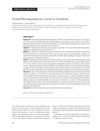
research Frontal fibrosing alopecia: a survey in 16 patients
The study found that Frontal Fibrosing Alopecia affects a broader age range of women and early treatment can help stop hair loss.
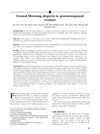
research Frontal fibrosing alopecia in postmenopausal women
Some postmenopausal women with frontal fibrosing alopecia stopped losing hair with finasteride treatment, hinting at a possible hormonal cause.
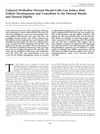
research Cultured Peribulbar Dermal Sheath Cells Can Induce Hair Follicle Development and Contribute to the Dermal Sheath and Dermal Papilla
Certain cells from hair follicles can create new hair and contribute to hair growth when implanted in mice.
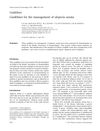
research Guidelines for the management of alopecia areata
The 2003 guidelines suggest that while some treatments can regrow hair in alopecia areata, none alter the disease's progression, and wigs may be the best option for extensive hair loss.

research Comparative Efficacy of Various Treatment Regimens for Androgenetic Alopecia in Men
Best hair growth results from combining finasteride and minoxidil.

research Lack of efficacy of finasteride in postmenopausal women with androgenetic alopecia
Finasteride doesn't effectively treat hair loss in postmenopausal women.

research Measuring Reversal of Hair Miniaturization in Androgenetic Alopecia by Follicular Counts in Horizontal Sections of Serial Scalp Biopsies: Results of Finasteride 1mg Treatment of Men and Postmenopausal Women
Finasteride 1mg helps reverse hair miniaturization in men and postmenopausal women.

research Changes in hair weight and hair count in men with androgenetic alopecia, after application of 5% and 2% topical minoxidil, placebo, or no treatment
Minoxidil increases hair weight and count temporarily in men with hair loss.
research Hair Follicle Biology, the Sebaceous Gland, and Scarring Alopecias

research Activation of Cytoprotective Prostaglandin Synthase-1 by Minoxidil as a Possible Explanation for Its Hair Growth-Stimulating Effect
Minoxidil boosts hair growth by activating PGHS-1.
research PUVA treatment of alopecia areata partialis, totalis and universalis: audit of 10 years' experience at St John's Institute of Dermatology

research Histologic Response to Topically Applied Minoxidil in Male-Pattern Alopecia
Minoxidil can help grow hair and make hair follicles bigger, but it can also cause side effects.
Related
research Potential Herbal Medicine for Alopecia Areata Treatment: A Systematic Review
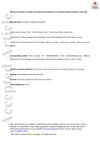
research Efficacy of systemic minoxidil and tofacitinib combination in treatment‐resistant alopecia universalis
Using minoxidil and tofacitinib together can effectively treat severe hair loss.
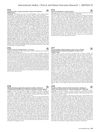
research 575 Topical minoxidil adherence in alopecia patients
The research found that certain characteristics like age, sex, race, marital status, and education level can influence whether alopecia patients stick to their hair loss treatment with topical minoxidil.
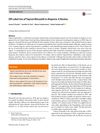
research Off-Label Use of Topical Minoxidil in Alopecia: A Review
Minoxidil helps treat eyebrow thinning, monilethrix, early hair loss, and shortens chemo-related hair loss.
research Alopecia Areata
research Alopecia Areata: Evidence-Based Treatments

research Topical Minoxidil
Minoxidil promotes hair regrowth, but more research needed for effectiveness and response factors.

research Topical Minoxidil in the Treatment of Alopecia Areata
Minoxidil helps hair regrowth in alopecia patients, with 16 having good results and no side effects.